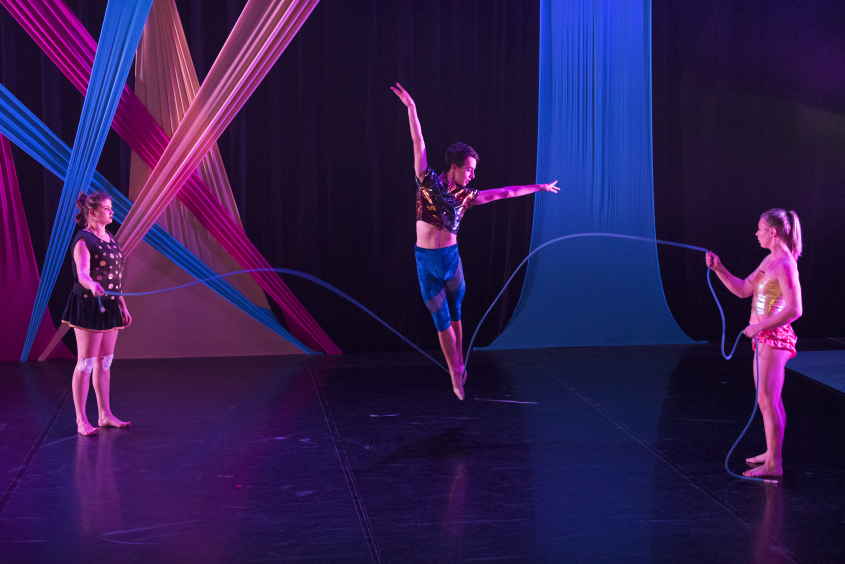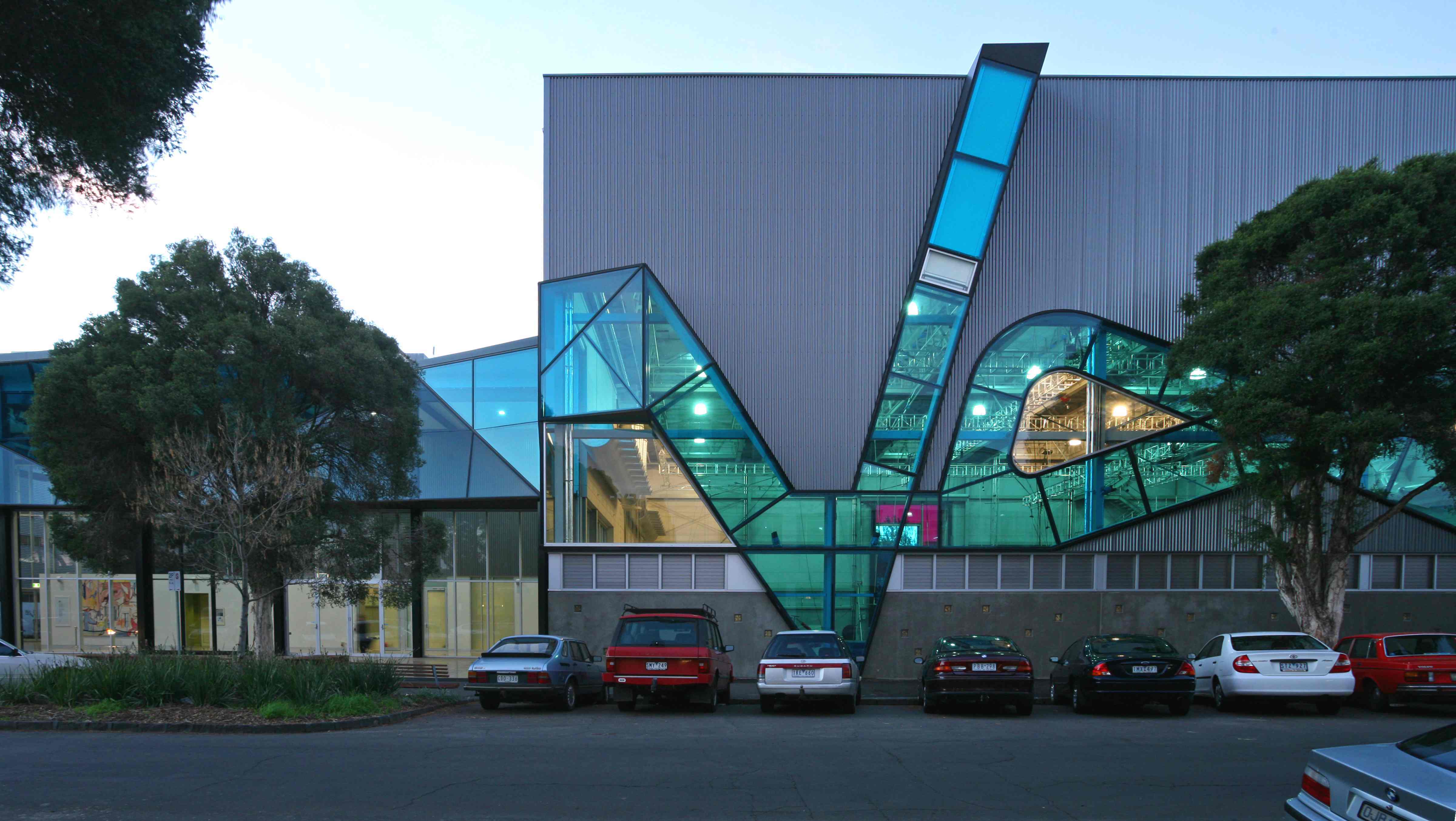Meet the Circus School – Community and Kinship, the NICA Culture in Australia
Found in the popular inner-city suburb of Melbourne, Prahran; the National Institute of Circus Arts (NICA) is the only course providing nationally-recognised circus qualifications in Australia. A hangout spot for many university students, Prahran has much to offer down to its iconic main strip Chapel Street, from cafes to op shops, restaurants and nightlife. Having spent nearly three years exploring the vicinity around NICA, I have many fond memories of secret bars, world-class coffee, and vintage op shop finds – and I still haven’t explored it all.
Tucked away, just off Chapel Street, NICA stands as two main training facilities joined by a brightly lit foyer. As a recognised branch of Swinburne University, the Prahran campus has been home to NICA’s faculty staff and coaches since 2001.
The two buildings encompass all the elements a circus school has to offer. There are several aerial points rigged throughout the space, allowing students to suspend themselves mid-air on a variety of trapezes, aerial hoops, and interesting shapes. There are students found spinning on Roue Cyr that drive themselves around in continuous circles. Some juggle, some balance steadily across a wire — a few dive through the air on swinging trapeze. Walking through the buildings, you might notice there are more people upside down than the right side up.

This is a poignant part of the NICA culture for me. The community and kinship that is built in the training space is a highlight of the course that cannot go understated. The bonds of blood, sweat and tears run deep into my relationships with my fellow classmates. This trust is something unique to circus that you can’t compare to an average arts degree.
After a rigorous audition process, on the first day of the bachelor program at NICA around 20 students enter the space for the first time. Throughout the three years, these students spend together, they will experience hours of daily physical training, complemented by academic lessons, dance classes, and performance lectures and explorations. They will learn anatomy and physiology, circus history, music and business. The movement classes cover an array of ballet, hip hop and contemporary dance that allows the students to better utilise their own bodies. The performance element of the course is a thoroughly detailed process of discovering how to move with their individual apparatus, how to communicate meaning, and how to subvert expectations.
The most formative performance opportunities are the annual shows. Across the year levels, the students spend three months creating, developing and rehearsing shows that are performed at different intervals throughout the year. The shows are aimed at teaching different performance outcomes such as process, choreography and autonomy. The first-year show is dedicated to the creative and rehearsal process, and as such is not based on a final outcome, and is not open to the public. The second and third-year show, however, are open for audiences to buy tickets and come and enjoy. This gives students an experience of theatre-based performances along with stage design and production elements. They are able to learn to work with directors, choreographers and designers, and safety and stage managers to develop an ensemble-based show.

I was lucky enough during my second year to be a part of the show “Le Sacre” – a collaborative show with the Australian Ballet School, directed by Zebastian Hunter, Meredith Kitchen and Simon Dow. This experimental part-circus, part-ballet piece was the first of its kind and was an eye-opening experience. Eighteen circus performers working alongside twenty-six ballet dancers allowed us so much respect for the other’s discipline and demonstrated to me the importance of cross-pollination and mixed media in the arts – something I’m still passionate about exploring and further developing.
During the student’s third year, aside from the group ensemble show, there is a second formative performance which encompasses each student’s first specialty routine. This showcase is a cabaret-esque show that encompasses an amalgamation of styles and genres and is put on for casting directors, producers and corporate executives; as well as the general public. Each student has a solo piece that is the physical representation of what they have learned in their years to date at the school. This performance can help the students become recognised in the industry, or create quality material and good video footage for later auditions and casting calls.
Another fantastic opportunity that is offered by the school is the second year study tour,which takes the students through Las Vegas to Montreal. This was a pivotal point in my circus career. It allowed me to make the distinction between hobby and profession. Seeing the number of successful shows in both Las Vegas and Montreal gave me a sense that I could be successful in this field.
The study tour took us to Vegas, the shiny, casino capital. We spent four nights watching some of the most successful large scale circus productions and magicians. From here we travelled further north to Canada, where we explored the Quebec province. We trained at the École de Cirque de Québec and the École Nationale de Cirque where we met students and trainers alike, and forged international connections. This was particularly imperative to us Australian artists as we are so far away from Montreal – the ‘circus capital of the world’. We toured Cirque du Soleil and met the casting directors of Seven Fingers and Cirque Èloize. As much fun as touring overseas with your friends is, this trip was invaluable to us as emerging artists. We got international industry experience and advice from the companies we were dreaming of auditioning for. It was a once in a lifetime opportunity, and I’m sure certain doors were open to us under the NICA name that may have remained closed otherwise.

Another valuable service NICA offers to its students is the healthcare team. There are physiotherapists each day of the week alternating between the morning and the afternoon with 20-minute sessions available for the students to book. These physios liaise weekly with coaches, and the strength and fitness instructor to ensure you are adequately protected from injury, and that you are on the fastest and most efficient route of healing. As the course is full time it is difficult for students to afford or have time to book into these types of services externally, but the real benefit is the physios understanding of the nature of the course, and the relevance of the rehabilitation exercises they prescribe.
Many of the coaches at NICA have been performers and have retired or settled down to coach full time at the school. We are lucky to be regaled by tales from their tours and performances that inform our choices, hopes and aspirations within the industry. They offer a worldly perspective on all aspects of the industry, the nitty-gritty, the beauty, and the technical elements. They come from a highly diverse background and celebrate cultural differences throughout the training space. NICA is particularly influenced by the high level Chinese and Russian acrobats that are considered world-class in the international market. All the coaches at NICA teach at an extremely high standard, as can be reflected in the students that graduate in December each year.

After graduating, the students are welcomed into CircaNICA, an in house agency that represents over 400 circus performers. CircaNICA opportunities range from festivals, corporate events and even film. These opportunities give students a launching platform to find long-lasting work or a springboard for a successful freelance career. The knowledge that you will be supported through the transition of student to full time acrobatic is comforting.
NICA also has a certificate program that can be used as a stepping-stone for the bachelor program. This covers similar course content but over less hours and in a one-year timeframe. It is suitable for those looking to increase their fitness for the bachelor program or those who cannot commit to the three-year course.
The NICA applications open at the start of July and close early September, with auditions being at the end of the month. You can audition all over Australia in different locations, as well as online if you’re coming from overseas. If you choose to audition, you can attend a pre-audition workshop that NICA runs to get the inside scoop of what the school looks for in applicants, and what skills you need to hone in on moving towards the end of September. They even have a hashtag, #NICAauditionjourney, that allows you to connect and share with other potential students leading up to audition day.
As I embark on my last six months at the school, this article has given me a great opportunity to reflect on the unique experiences I have had attending this university. Whether for those who attend to mark the start of their circus career, or those looking to increase their ability, mobility or strength, NICA is a catalyst for personal growth and professional development. Having performed with a community circus since I was eight years old, it was interesting to develop my voice outside of that childlike character and find my unique way of perceiving the world. These are the things that we learn by dedicating ourselves to something so physically demanding for three years. For me, it was humility, humor, and finding the extraordinary in the mundane. From my time at NICA, I will always see the challenges in the world as opportunities I can create for myself.
Main Image: National Institute of Circus Arts NCC Building. Photo Credit Peter Hyatt.Do you have a story to share? Submit your news story, article or press release.





